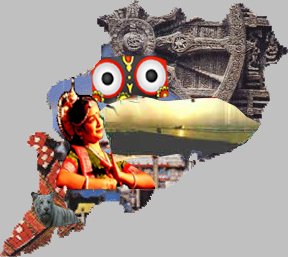Part V: Odisha, The Land Of Many Firsts

The power of persuasion, tenacity and perseverance of us Odias has always seen success, despite challenges. Madhusudan Das, a member of the Bengal Legislative Council by then, informed Lord Curzon, the Governor General about the huge mass movement to the effect and it was their demand that the Odia-speaking area should be placed under a Chief Commissioner.
The Sambalpur delegation consisted of social leaders like Madan Mohan Misra, Balabhadra Suar, Braja Mohan Patnaik, Bihari Das Mahant and Sripati Misra. They even met the Governor General at Simla to acquaint him with the problems. As a result, Odia language was accorded its rightful significance in Sambalpur district from January 1, 1903. Voices from across the state were getting louder and more assertive.
The Ganjam intellectuals petitioned Lord Curzon “to bring together the scattered divisions inhabited by Odia-speaking people, i.e., Ganjam in Madras, Sambalpur in the Central Provinces, and Orissa in Bengal under one government”. Raja Baikuntha Nath De of Balasore also advocated for a separate administrative unit for all Odia speaking territories or to keep them under one provincial administration.
Since the 16th century, Odisha has been traversing from one phase to another of externally administered governance and by the beginning of the 20th century, Odisha had realised the repercussions of “division of the state” and was becoming more and more united in its voice for one Odisha. In 1903, a small group of ‘young Turks’ gathered in Rambha on the idyllic shore of Chilka lake to set up Ganjam Jatiya Samiti.
Before the formation of Utkal Sammilani, Ganjam Jatiya Sammilani was the only forum, where leaders from all sections came together. Both the forums were patronised by Harihara Mardaraj, King of Khallikote, who was one of the founders of Utkal Sammilani or Utkal Union Conference and the Ganjam Jaitya Sammilani.
In 1903, major congregations of Odia nationalism were organised, one in Berhampur and another one at Cuttack, ably steered by erudite young influencers like Lingaraj Panigrahi (later attended London Round Table Conference, became the Chief Justice of Odisha High Court and Speaker of the Assembly), Nilamani Bidyaratna, King of Paralakhemundi Sri Krushna Chandra Gajapati, Utkalamani Pandita Gopabandhu Das, Pandita Godabarisha Mishra,Pandita Nilakantha, the editor of Utkala Dipika Sri Gaurishankar and others.
Utkal Sabha of Cuttack called for a public meeting under the leadership of Madhusudan Das. It was decided in the conference, to send a petition to the Governor General (I) to transfer to the Orissa Division the Odia-speaking portions of the districts of Ganjam, Vizagpatnam, Sambalpur, Chhota Nagpur and Midnapur ii) retaining the judicial supervision of the High Court at Calcutta and maintaining the educational connection with the Calcutta University. On December 30 and 31, 1903 ‘Utkal Sammilani’ met at Cuttack amidst fanfare, unparalleled enthusiasm and steely determination. The conference was presided by Sriram Chandra Bhanja Deo, the Maharaja of Mayurbhanj and was attended by several feudal chiefs, zamindars and royals, besides other leaders. Rajendra Narayan Bhanj Deo, the Raja of Kanika was the Chairman of the Reception Committee and Madhusudan Das was the Secretary. Madhu babu was the driving force behind the Sammilani.
Orissa has the distinction of many firsts to its credit. It was the first state in our country to have been created on the basis of language. It paved the path for a long cherished dream of our nationalist leaders for linguistic reorganization of states. But time and again we have passed through the test of fire – through highs and lows in the life of the state and its people but always emerged stronger. I have always risen like the proverbial phoenix. While Odisha was going through trials and tribulations, the power of information dissemination and public discourse was never undermined.

Comments are closed.